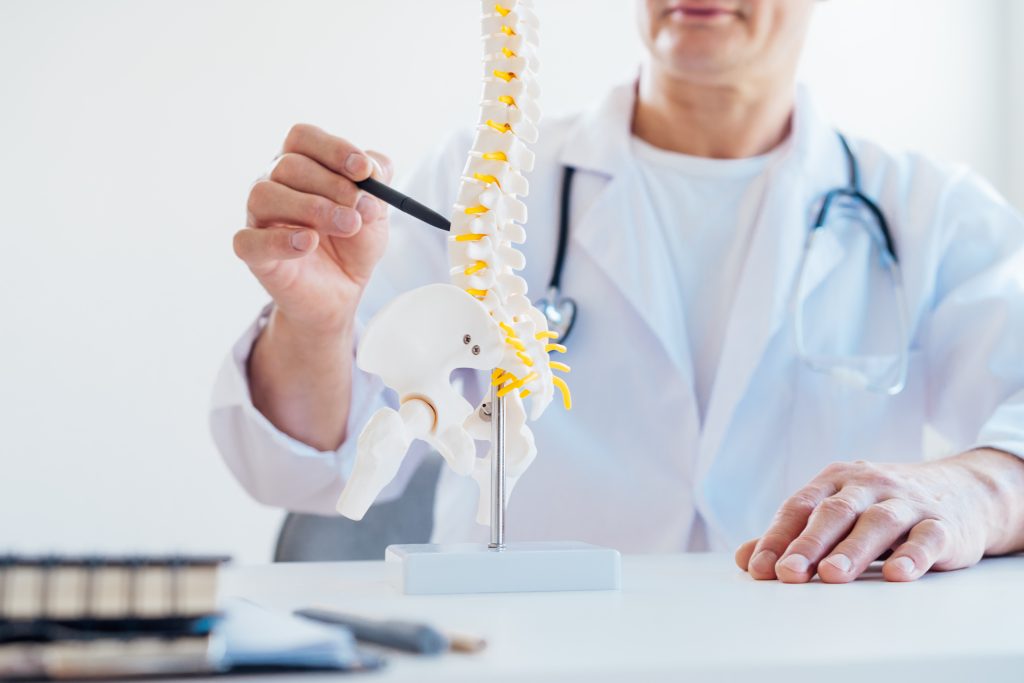Chiari Malformation
A Chiari malformation is a defect in the structure of your skull that forces a portion of your brain to shift into your spinal canal. The symptoms can vary, ranging from mild to severe or even being asymptomatic. Typically, it leads to headaches and problems with balance and coordination due to its impact on the cerebellum. Undergoing surgery could potentially provide relief.

Types of Chiari Malformations
The first type is the most frequently seen in children. In this type, the lower section of the cerebellum extends into a hole at the base of the skull, known as the foramen magnum, while the brain stem does not. Usually, only the spinal cord passes through this opening.
Chiari malformation can only be acquired in Type 1.
Type 2 typically occurs exclusively in children who are born with spina bifida, a condition characterized by insufficient development of the spinal cord and/or its protective coverings.
Type 2 Chiari malformation, also referred to as “classic” Chiari malformation or Arnold-Chiari malformation, is characterized by the cerebellum and brain stem protruding into the foramen magnum.
Type 3 is a less common but more severe abnormality. Brain tissue expands into the spinal cord and in certain instances, sections of the brain can bulge out. This condition can cause significant neurological impairments and potentially endanger a person’s life. It is frequently accompanied by hydrocephalus, which is the buildup of fluid in the brain.
Type 4 refers to a condition where the cerebellum is not fully developed. This state is typically deadly during early infancy.
What are the indications of a Chiari malformation?
Typical indications of Chiari malformations consist of:

- Symptoms of vision alteration may include experiencing double vision, having blurry vision, having irregular eye movements, or being sensitive to light.
- Conditions affecting the ears such as tinnitus, which is a persistent ringing noise, or a decrease in one’s ability to hear.
- Problems with swallowing (excessive saliva, throwing up, choking), consuming food or liquids, or communicating verbally can be challenging.
- Curved spine (scoliosis).
- Loss of bladder or bowel control.
- Fainting.
- Sleep apnea causes difficulty breathing during sleep.
What is the treatment for Chiari malformation?
The course of treatment is determined by the type, intensity, and symptoms of the condition. If the condition does not significantly disrupt your daily activities, your doctor might prescribe medication to alleviate any pain you may experience.
If your symptoms are causing interference or if there is any damage to your nervous system, your doctor may suggest surgical treatment. The specific type and quantity of surgeries required will vary depending on the severity of your condition.
For adults: In order to alleviate pressure on the spinal column, surgeons will remove a section of the skull to create additional space. The brain will then be protected by a patch or tissue taken from another area of your body.

In order to create more space, the surgeon might employ electric current to reduce the size of the cerebellar tonsils. Additionally, it may be required to extract a small portion of the spinal column.
In the case of babies and young children: Babies and young children diagnosed with spina bifida will require a surgical procedure to reposition their spinal cord and close the opening at the back. If they also have hydrocephalus, a tube will be inserted by the surgeon to drain extra fluid and alleviate pressure. Sometimes, a small opening may be made to enhance the flow of fluid. Surgery has proven to be successful in alleviating symptoms in children.
How soon after treatment will I feel better?
The time it takes for relief from mild symptoms varies depending on the treatment option chosen by you and your healthcare provider. Pain medication or therapy may provide quick relief, while recovery from surgery can take weeks to months. After undergoing surgery, you may observe a significant reduction or complete disappearance of your symptoms.
Complications
Some individuals with Chiari malformation may not experience any symptoms and therefore do not require any treatment. However, in other cases, Chiari malformation gradually worsens and can result in severe complications such as:
- Hydrocephalus is a potentially deadly condition that occurs when there is an accumulation of cerebrospinal fluid (CSF) in the brain. The build-up of CSF happens when it is unable to drain properly, resulting in increased pressure within the skull. This can cause cognitive impairments and a deformed head shape. If left untreated, hydrocephalus can be life-threatening. It is commonly associated with Chiari malformation type II.
- Spina bifida refers to a condition where the spinal cord or its protective covering has not fully developed. This can result in the exposure of a portion of the spinal cord, which can lead to severe issues like paralysis. Those affected by Chiari malformation type 2 typically experience a type of spina bifida known as myelomeningocele.
- Syringomyelia and hydromyelia occur when there is an abnormal flow of cerebrospinal fluid (CSF) between the brain and spine, leading to a buildup of fluid in the spine. This accumulation can harm the spinal cord, resulting in various symptoms such as difficulty with movement and balance, pain, weakness in the muscles, muscle spasms, numbness, reduced ability to sense hot and cold temperatures, and loss of control over bladder and bowel movements.
- Tethered cord syndrome occurs when the spinal cord becomes attached to the spine, leading to its stretching. This stretching can result in severe harm to the nerves and muscles in the lower part of the body.
Treatment in Türkiye:
The medical staff of surgical teams, doctors, and consultants at REHABTÜRK can provide the best treatment options and free consultations, striving to stay up-to-date on the latest medical technologies and methods.
